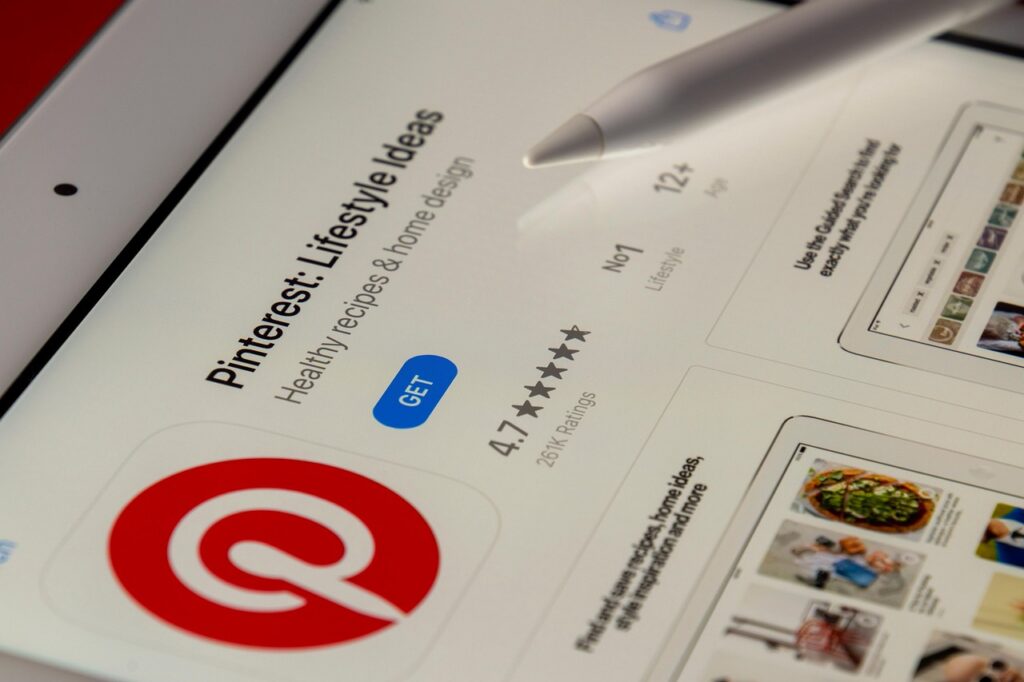This is How to Grow Your Business on Pinterest in 2025
In the ever-evolving landscape of digital marketing, Pinterest stands out as a unique and powerful platform for businesses looking to expand their reach, drive traffic, and boost sales. With over 500 million monthly active users, Pinterest is more than just a social media platform—it’s a visual search engine where users actively seek inspiration, ideas, and products. For small businesses, e-commerce brands, and entrepreneurs, mastering Pinterest marketing strategies can unlock significant growth opportunities. This article will explore how to grow your business on Pinterest, offering actionable tips, strategies, and insights to help you leverage this platform effectively.
Why Pinterest Matters for Business Growth
Pinterest is a goldmine for businesses because its users are often in a discovery mindset. Unlike other platforms where users may passively scroll, Pinterest users are actively searching for ideas, products, and solutions. According to Pinterest’s own data, 97% of searches on the platform are unbranded, meaning users are open to discovering new brands and products. This makes Pinterest an ideal platform for small businesses and e-commerce brands looking to grow their company on Pinterest.
Additionally, Pinterest users are planners. Whether they’re organizing a wedding, redesigning a home, or shopping for fashion, they’re thinking ahead. This forward-thinking behavior translates into high purchase intent, with studies showing that Pinterest users are 7 times more likely to purchase products they’ve saved compared to other platforms. For businesses, this means Pinterest can drive not only traffic but also conversions.
In this guide, we’ll cover everything you need to know about how to grow your business on Pinterest, from setting up a business account to optimizing your content and leveraging Pinterest’s advertising tools. Let’s dive in!
Step 1: Set Up a Pinterest Business Account
To effectively grow your business on Pinterest, you need a Pinterest Business account. This free account gives you access to advanced features like analytics, ads, and promoted pins, which are essential for tracking performance and scaling your efforts.
How to Create a Pinterest Business Account
- Sign Up or Convert: If you don’t have a Pinterest account, visit Pinterest.com/business and sign up for a business account. If you already have a personal account, you can convert it to a business account in the settings.
- Complete Your Profile: Add a professional profile picture, such as your logo, and write a concise bio that includes keywords like “Pinterest marketing strategies for small business” or “grow your company on Pinterest.” For example: “Helping small businesses thrive with innovative products and inspiration.”
- Claim Your Website: Claiming your website verifies your brand and allows you to track analytics for pins linked to your site. This step is crucial for driving traffic and measuring success.
- Enable Rich Pins: Rich Pins pull data directly from your website, providing extra details like pricing, availability, or recipe ingredients. They enhance user experience and improve click-through rates.
A well-optimized business account sets the foundation for Pinterest for e-commerce growth and ensures your brand looks professional and trustworthy.
Step 2: Understand Your Audience
To grow your business on Pinterest, you must understand who your target audience is and what they’re searching for. Pinterest’s user base is predominantly female (about 60%), with a significant portion aged 25–44. However, the platform is growing in diversity, with increasing numbers of male users and Gen Z pinners.
Researching Your Audience
- Use Pinterest Trends: Pinterest Trends is a free tool that shows popular search terms on the platform. For example, if you run a home decor business, you might find that “minimalist bedroom ideas” or “boho living room decor” are trending. Tailor your content to these trends to attract more clicks.
- Analyze Competitors: Look at what your competitors are pinning. Which of their pins get the most engagement? Use this insight to inform your own content strategy.
- Leverage Analytics: Once you start pinning, Pinterest Analytics will show you which pins resonate with your audience. Pay attention to metrics like saves, clicks, and impressions to refine your approach.
By aligning your content with your audience’s interests, you can create pins that drive engagement and traffic, helping you get more traffic from Pinterest.
Step 3: Create Compelling Visual Content
Pinterest is a visual platform, so high-quality, eye-catching content is non-negotiable. Your pins need to stand out in a sea of images to capture attention and drive clicks.
Tips for Creating Pinterest-Worthy Content
- Use High-Quality Images: Invest in professional photography or use tools like Canva to create polished graphics. Images should be clear, well-lit, and visually appealing.
- Optimize Image Dimensions: Pinterest recommends a 2:3 aspect ratio (e.g., 1000 x 1500 pixels) for standard pins. Vertical images perform better because they take up more space in users’ feeds.
- Incorporate Text Overlays: Adding text to your pins can clarify what the pin is about. For example, a pin for a recipe might include the dish’s name and a call-to-action like “Try this easy dinner idea!” Keep text concise and use readable fonts.
- Brand Consistently: Use your brand’s colors, fonts, and logo to create a cohesive look. Consistency helps users recognize your pins instantly.
- Create Infographics and Tutorials: Pins that offer value, like step-by-step guides or infographics, tend to get more saves and shares. For example, a pin titled “5 Pinterest Marketing Strategies for Small Business” with a visual checklist could perform well.
Types of Pins to Create
- Product Pins: Showcase your products with clear images, prices, and links to your e-commerce store. These are perfect for Pinterest for e-commerce growth.
- Idea Pins: These are Pinterest’s version of Stories, allowing you to share multi-page content like tutorials, behind-the-scenes looks, or product demos.
- Blog Post Pins: If you have a blog, create pins that link to your articles. For example, a pin linking to a blog post titled “How to Get More Traffic from Pinterest” can drive clicks to your website.
- Lifestyle Pins: Show your products in context. For instance, a fashion brand might pin an outfit styled for a specific occasion, like “Summer Wedding Guest Looks.”
By creating visually appealing and strategic content, you can attract more clicks and grow your company on Pinterest.

Step 4: Optimize Your Pins for Search
Pinterest operates as a visual search engine, so optimizing your pins for search is critical to getting discovered. By incorporating keywords like “how to grow your business on Pinterest” and “Pinterest marketing strategies for small business,” you can improve your pins’ visibility.
How to Optimize Pins for SEO
- Use Keywords in Pin Descriptions: Write detailed descriptions (100–200 characters) that include relevant keywords. For example: “Discover Pinterest marketing strategies for small business to boost your brand’s visibility and drive traffic!”
- Add Keywords to Board Titles: Create boards with descriptive, keyword-rich titles like “Pinterest for E-commerce Growth” or “How to Get More Traffic from Pinterest.” This helps Pinterest categorize your content.
- Use Hashtags: Add 2–4 relevant hashtags to your pin descriptions, such as #PinterestMarketing or #SmallBusinessTips. Hashtags make your pins more discoverable in searches.
- Pin Consistently: Pinterest rewards active accounts. Aim to pin 5–10 times per day, mixing your own content with curated pins from other users.
By optimizing your pins for search, you increase the likelihood of appearing in users’ feeds and search results, driving more traffic to your website.
Step 5: Leverage Pinterest Boards Strategically
The Pinterest boards are collections of pins organized by theme, and they play a crucial role in your marketing strategy. Well-organized boards make it easier for users to find your content and engage with your brand.
Best Practices for Pinterest Boards
- Create Niche Boards: Instead of a generic “Fashion” board, create specific boards like “Summer Outfit Ideas” or “Work-from-Home Style.” Niche boards attract more targeted audiences.
- Add Descriptions: Write keyword-rich board descriptions to improve SEO. For example: “Explore Pinterest marketing strategies for small business to grow your brand and drive traffic.”
- Use Cover Images: Customize your board cover images to reflect your brand’s aesthetic. This creates a polished look and encourages clicks.
- Collaborate on Group Boards: Join or create group boards where multiple users contribute pins. This can expand your reach and expose your content to new audiences.
By curating boards that align with your brand and audience interests, you can enhance your Pinterest presence and drive engagement.
Step 6: Utilize Pinterest Ads for Faster Growth
While organic growth is possible on Pinterest, Pinterest Ads (Promoted Pins) can accelerate your results. Ads allow you to reach a larger audience and target specific demographics, interests, or search terms.
Types of Pinterest Ads
- Promoted Pins: These look like regular pins but are boosted to appear in more feeds. They’re great for driving traffic to your website or e-commerce store.
- Promoted Carousels: Showcase multiple images in a single ad, ideal for highlighting different products or features.
- Shopping Ads: Perfect for e-commerce businesses, these ads pull directly from your product catalog and include pricing and availability.
- Idea Ads: Promote your Idea Pins to showcase tutorials, stories, or brand content in an engaging format.
Tips for Running Pinterest Ads
- Target Strategically: Use Pinterest’s targeting options to reach users based on demographics, interests, or keywords like “Pinterest for e-commerce growth.”
- Set a Budget: Start with a small budget (e.g., $5–$10 per day) and test different ad formats to see what works best.
- Use Compelling Visuals: Ads should follow the same visual guidelines as organic pins—high-quality images, vertical format, and clear branding.
- Track Performance: Use Pinterest Analytics to monitor ad performance and optimize based on clicks, conversions, and return on ad spend (ROAS).
Pinterest Ads can significantly boost your visibility and help you grow your company on Pinterest faster than organic efforts alone.

Step 7: Drive Traffic to Your Website
One of the biggest benefits of Pinterest is its ability to drive traffic to your website. To maximize this, ensure every pin links to a relevant page on your site, whether it’s a product page, blog post, or landing page.
Strategies to Get More Traffic from Pinterest
- Link to High-Value Pages: Direct users to pages that convert, like product listings or lead capture forms. Avoid linking to generic pages like your homepage.
- Create Multiple Pins per Page: Design different pins with unique images and descriptions that link to the same URL. This increases your chances of getting clicks.
- Use Call-to-Actions (CTAs): Include CTAs in your pin descriptions, like “Shop now!” or “Learn how to grow your business on Pinterest.”
- Optimize Your Website: Ensure your website is mobile-friendly and has fast loading times, as many Pinterest users browse on mobile devices.
By driving targeted traffic from Pinterest, you can increase conversions and grow your business effectively.
Step 8: Analyze and Refine Your Strategy
To sustain long-term growth on Pinterest, regularly analyze your performance and refine your strategy based on data.
Using Pinterest Analytics
- Track Impressions and Clicks: Monitor which pins are getting the most views and clicks to understand what resonates with your audience.
- Measure Saves: High save rates indicate that users find your content valuable and want to return to it later.
- Analyze Audience Insights: Pinterest Analytics provides data on your audience’s demographics and interests. Use this to tailor your content.
- Test and Iterate: Experiment with different pin formats, posting schedules, and keywords. For example, test whether “how to get more traffic from Pinterest” performs better as a blog post pin or an infographic.
By continuously optimizing your strategy, you can ensure your Pinterest efforts yield consistent results.
Step 9: Stay Consistent and Patient
Growing your business on Pinterest takes time and consistency. Unlike platforms where viral content can lead to overnight success, Pinterest rewards steady effort. Pin regularly, engage with your audience, and stay updated on platform trends to maintain momentum.
Tips for Staying Consistent
- Use a Scheduling Tool: Tools like Tailwind or Buffer allow you to schedule pins in advance, saving time and ensuring regular posting.
- Repin Your Best Content: Evergreen content, like a pin about “Pinterest marketing strategies for small business,” can be repinned periodically to maintain visibility.
- Stay Active: Engage with other users by saving their pins, commenting, and joining group boards. This builds community and increases your reach.
Step 10: Explore Advanced Pinterest Features
As you grow your business on Pinterest, explore advanced features to take your strategy to the next level.
Video Pins
Video content is gaining traction on Pinterest. Create short, engaging videos (15–60 seconds) that showcase your products or tell your brand’s story. For example, a video pin titled “How to Grow Your Business on Pinterest” could feature a quick tutorial on setting up a business account.
Pinterest Trends and Seasonal Content
Capitalize on seasonal trends by creating content for holidays, events, or popular seasons. For instance, a retail brand might create a board for “Holiday Gift Ideas” or “Back-to-School Essentials.” Use Pinterest Trends to identify timely keywords and themes.
Shop the Look Pins
For e-commerce businesses, Shop the Look Pins allow you to tag products in lifestyle images, making it easy for users to shop directly from your pins. This is a powerful tool for Pinterest for e-commerce growth.
Common Mistakes to Avoid
To maximize your success, steer clear of these pitfalls:
- Neglecting SEO: Failing to use keywords like “how to get more traffic from Pinterest” can limit your discoverability.
- Posting Inconsistently: Sporadic pinning can hurt your visibility. Aim for a consistent schedule.
- Ignoring Analytics: Without tracking performance, you won’t know what’s working or how to improve.
- Using Low-Quality Images: Poor visuals can deter users from engaging with your pins.
Conclusion
Pinterest offers an incredible opportunity for businesses to grow their audience, drive traffic, and boost sales. By setting up a professional business account, creating compelling content, optimizing for search, and leveraging ads, you can unlock the full potential of Pinterest marketing strategies for small business. Whether you’re an e-commerce brand looking to scale or a small business aiming to grow your company on Pinterest, this platform can deliver measurable results with the right approach.
Start implementing these strategies today, and watch your business thrive on Pinterest. For more tips and inspiration, explore our blog for in-depth guides on how to get more traffic from Pinterest and other digital marketing strategies.

